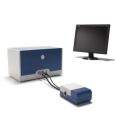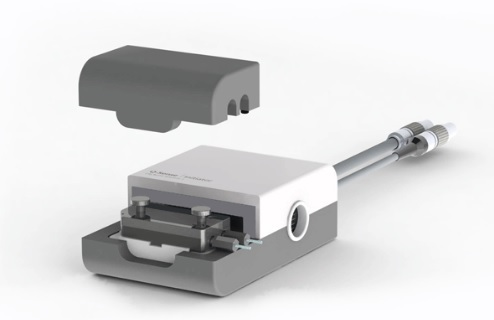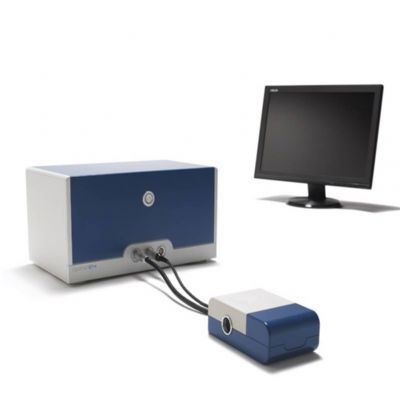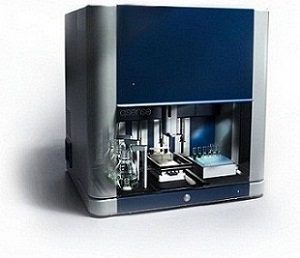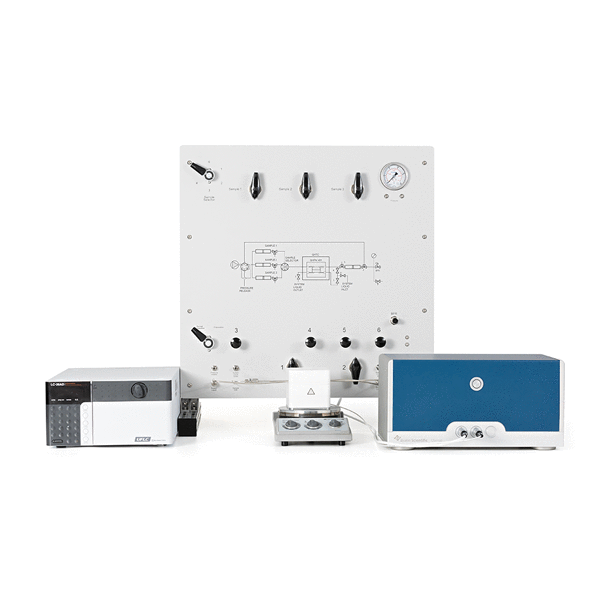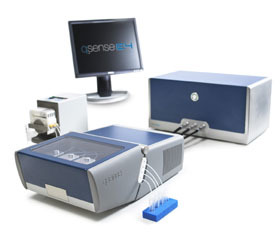
方案详情
文
高浓度的蛋白质溶液通常在给药方面有广泛应用。比如单克隆抗体的制剂
往往需要准备高浓度蛋白质溶液。而这种高浓度溶液价格昂贵,所以样品的体积成了关键。本文中使用QCM-D仪器进行微升级的蛋白样品测量。
方案详情

Biolin Scientific[ Progress Together] 6 [Application Note] 16 QCM-D viscosity analysis for microlitre protein samplesHigh concentration protein solutions are common in pharmaceutical applications.For example, solution formulation of monoclonal antibodies for therapeuticpurposes often necessitates preparation of high concentration solutions of theseproteins. Since high concentration solutions are expensive, sample volume is critical.This application note demonstrates how Q-Sense QCM-D instruments can be used tomeasure viscosity in microliter volumes. Introduction The Quartz Crystal Microbalance with Dissipation (QCM-D)measures viscosity with a shear oscillation technique. The changein the resonance frequency (Af) of the oscillating sensor and thedampening of the sensor movement (AD) are monitored whenthe sample is injected into the sensor chamber. The evaluationsoftware QTools* allows for calculations of viscosity for bothNewtonian and non-Newtonian fluids. Approach To prove the use of QCM-D as a viscometer, two viscositystandards, S3 and S6, were measured at different temperatures.Viscosity standards are well characterized Newtonian fluids usedfor calibration of viscometers and were purchased from ParagonScientific, UK. Next, sucrose solutions of different concentrationswere measured. These results were verified by comparisonto other published data on viscosity of the same fluids. Todemonstrate the usefulness of the QCM-D viscometer in proteinapplications, viscosities of concentrated BSA (bovine serum albumin) solutions were measured. Sample-to-sample variationswere measured by testing 3-4 samples under the same conditionsat the same time for all studies. Results and discussion Figure 1 shows a typical QCM-D data output of a viscositymeasurement. The reading starts with an empty chamber,followed by inflow of fluid (indicated by arrow in figure 1). The fand D data were then modeled in QTools to obtain viscosity data.For the modeling in QTools, literature values for density wereused. The results for the viscosity standards are shown in Figure 2. Theviscosities measured with QCM-D agreed with the specifications.It can be noted that the total deviation was higher at higherviscosities, but the percentage difference was not as significant.The deviation between the QCM-D measurements was very lowas can be seen from the error bars. Results from the sucrose study [Figure 2]: Viscosities of viscosity calibration standards acquired with QCM-Dcompared to specified viscosities from the manufacturer. [Figure 3]: Comparison of sucrose solution viscosities acquired with differenttechniques. [Figure 4]: Viscosity of BSA solutions acquired with QCM-D at 20℃. are presented in Figure 3. The viscosities obtained with QCM-Dagreed with data by Kurosawa et al, James et al and Saluja andKalonia and the low error bars show that the measurementreproducibility was very good. QCM-D can be used for viscosity measurements of fluids ofvarying character. It can also be used to study other parameterslike frequency dependence and surface adsorption processesassociated with the properties of the sample. To investigate the viscoelastic properties of the BSA solutions, theviscosities were modeled with both the Newtonian model and theMaxwell viscoelastic model. The shear thinning properties werealso investigated as well as the influence from surface adsorptionto the sensor. It was found that the fluids were Newtonian andthat other properties made negligible contribution to the results.Figure 4 shows the viscosities produced with the Newtonianmodel. The viscosities were found to increase dramatically withthe concentration. This was not further investigated since it wasoutside the scope of this study. ( R eferences: ) 1.QCM-D measurements by Q-Sense AB and Q-Sense, Inc in cooperation withPomona College, USA. Detailed reports are available from Q-Sense AB. ( 2. Oscillat in g frequency of p iezo-electric quartz c rystal in solutions. Anal Chim Acta. 1990;230;41-49. K u rosawa et al. ) ( 3. Viscometer cali b rati o n standards: viscosities of water between 0 and 60 de g r e e C and of selected aqueous sucrose solutions at 25 degree C from measurements with a flared capillary viscometer. J Phys D Appl Physiol. 1984; 17; 2 25-230.James et al. ) Conclusions ( 4. M easurement of fluid v i scosity at microliter volumes usin g q u artz imp ed - ance a nalysis. AAPS PharmSciTech 2 0 04; 5 ; 47. Saluja and K a lonia. ) QCM-D is a suitable tool for viscosity analysis of solutions, suchas high concentration protein, where low sample volume andnon-destructive analysis is preferable. The study shows that ( *) QTools is an a n alysis software included i n yo u r Q-Sense QCM- D system used for viscoelastic modeling of QCM - D data. ) Biolin Scientific [Progress Together] E-mail:info@biolinscientific.combiolinscientific.com []Q-Sense AN
确定
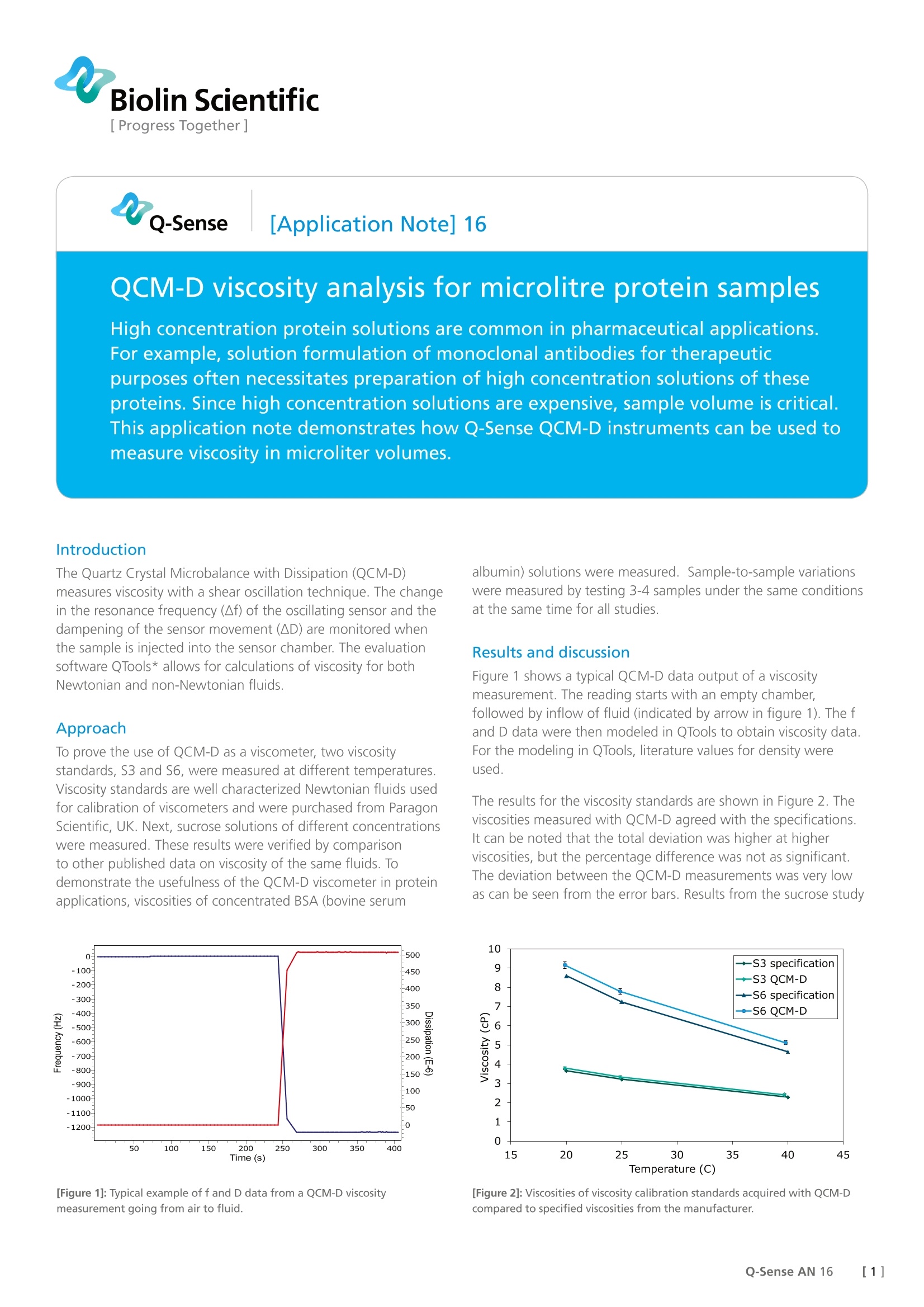
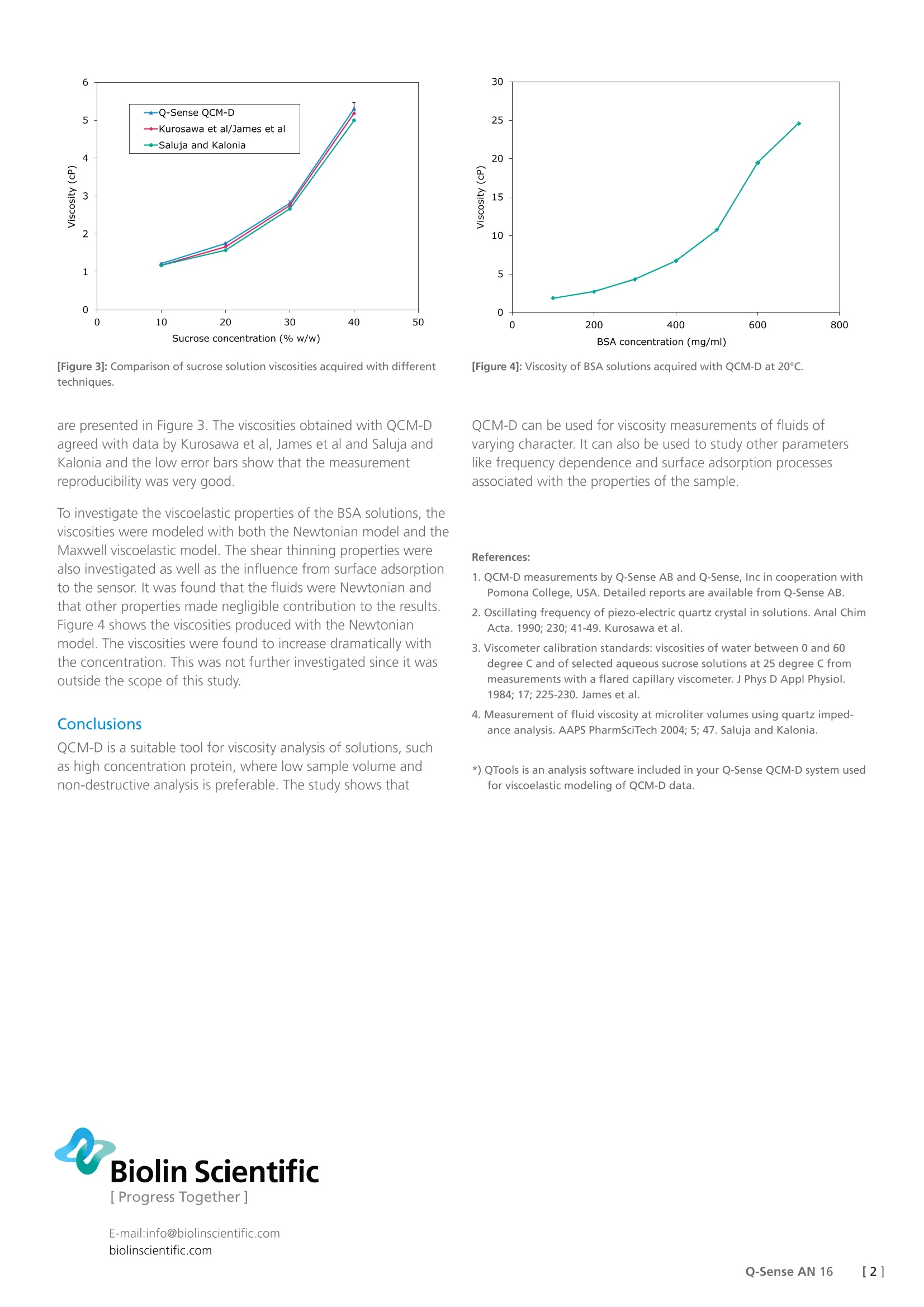
还剩1页未读,是否继续阅读?
瑞典百欧林科技有限公司为您提供《使用QCM-D检测微升级蛋白质样品粘弹性》,该方案主要用于其他中--检测,参考标准--,《使用QCM-D检测微升级蛋白质样品粘弹性》用到的仪器有QSense卓越版四通道石英晶体微天平、QSense Explorer扩展版石英晶体微天平、QSense全自动八通道石英晶体微天平
推荐专场
相关方案
更多
该厂商其他方案
更多










